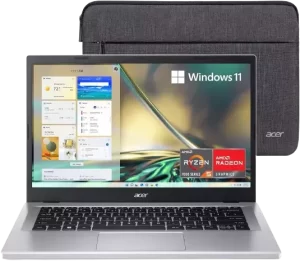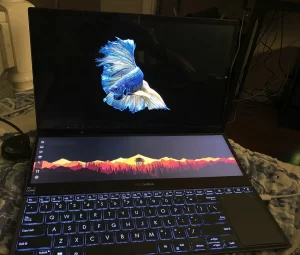Beyond Basics: Acer Aspire 3 Laptop in the Spotlight

My experience with the Acer Aspire 3 has been overwhelmingly positive. It excels in various aspects that cater to my needs. The laptop’s speed is more than adequate for regular usage, and the 14″ size enhances its portability. The screen impresses with its brightness, the trackpad functions seamlessly, and the keyboard’s layout is sensible and comfortable. The laptop’s port selection is commendable, contributing to its overall practicality. The aesthetics are appealing, and the included sleeve is a thoughtful bonus.
Given that I already own a gaming desktop, I primarily use the Acer Aspire 3 while traveling. Additionally, it proves convenient when I’m not in my office, providing a reliable platform for various activities, such as browsing and shopping. Moreover, the laptop has shown remarkable performance in remote streaming games from my primary system.

However, it’s crucial to manage expectations regarding speed, especially for those who heavily rely on PCs and seek a primary computer. While the laptop is responsive under normal load, it falls short when handling gaming or performance-intensive tasks. The 8 GB of RAM, although sufficient for current normal usage, may become a limiting factor in the future. Nonetheless, as a secondary PC or a primary device for basic tasks, the laptop’s speed is more than satisfactory.
Despite its affordability, the Acer Aspire 3 doesn’t feel “cheap.” Its plastic construction is well-executed, featuring a well-thought-out layout. I have no quibbles over the physical design or construction. To my surprise, the performance exceeded my initial expectations. In comparison, my work-issued Dell workstation, which costs ten times as much, has prompted more complaints.

In conclusion, I find the Acer Aspire 3 easy to recommend within its designated PC class. It offers a compelling package with minimal compromises, except in heavy workstations or gaming performance—features that are typically unavailable at this price point.








